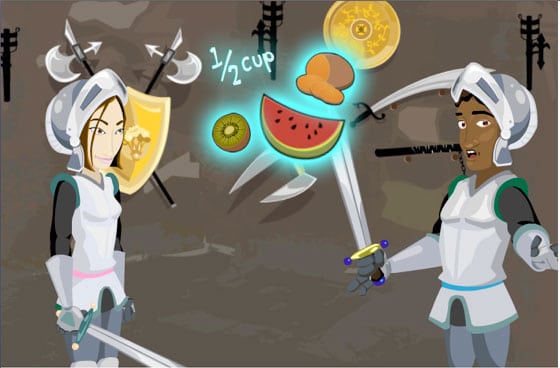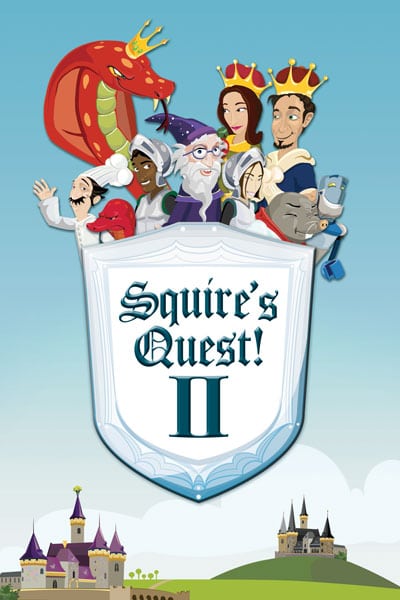Video games are often thought of as simply a source of entertainment. But, what if they could do more? Emerging evidence suggests that a special type of video game, called games for health, can change health behavior.
Working with a game design studio, we created Squire’s Quest! II a 10-episode game for health to help pre-adolescents (fourth and fifth graders) eat more fruit and vegetables. Children often do not meet federal dietary guidelines for fruit and vegetables. This is a problem because eating fewer fruits and vegetables than recommended is linked to certain diseases, like heart disease and some types cancers. Therefore, helping children eat more fruits and vegetables is an important public health goal.
A conceptual model (i.e., framework) guided game design, which included behavior change procedures such as goal setting, self-monitoring, and feedback. The game also included information about fruit and vegetables (e.g., real fruit and vegetables vs “imposters”; e.g., carrots = real vegetable, while carrot cake = imposter), shortcuts to help children remember important skills (e.g., problem solving), and patterns for how and when to eat fruit and vegetables. A “virtual kitchen” where children learned how to prepare child-friendly fruit and vegetable recipes (e.g., veggie wraps, smoothies) and guidance on how to create plans to eat more fruit and vegetables or overcome problems were also part of game-play.

A panel of 4th and 5th graders helped create the game and ensure that it was appealing to others their age. One of their jobs was to review the behavior change procedures to be sure they understood and were able to perform the tasks required by the game. The behavior change procedures were integrated into an entertaining storyline written by a professional writer. The game was set in a medieval kingdom under attack by a neighboring kingdom. Players volunteered to become Squires, who were in knights training to help the King and Queen save the Kingdom from its invaders.
Activities, designed to help children eat more fruits and vegetables, advanced the game action. For example, at one point in the storyline, the knights were in enemy territory with no healthy foods to eat. The Squire (i.e., player) used his/her newly-acquired knowledge of how to choose healthy foods at restaurants to fill bags with healthy foods for the knights. In this way, participants practiced and refined knowledge taught in the game in an entertaining and fun way.
Results of our study with 400 fourth and fifth graders showed that nearly all the children liked the game and rated it highly. When asked to give the game a grade, 92% gave it an A or B. Those who created a plan to help them meet their fruit and vegetable goal increased their intake by 0.72 servings a day immediately after they finished playing the game, and they were still eating more fruits and vegetables three months later (0.68 servings). This study provides evidence that embedding behavior change procedures into a videogame designed to promote healthy dietary behaviors is acceptable to children and can lead to behavior change, particularly when the game is designed in partnership with children and helps them make plans for how to eat more fruit and vegetables.

Images from Squire’s Quest II courtesy of Archimage, Inc.













